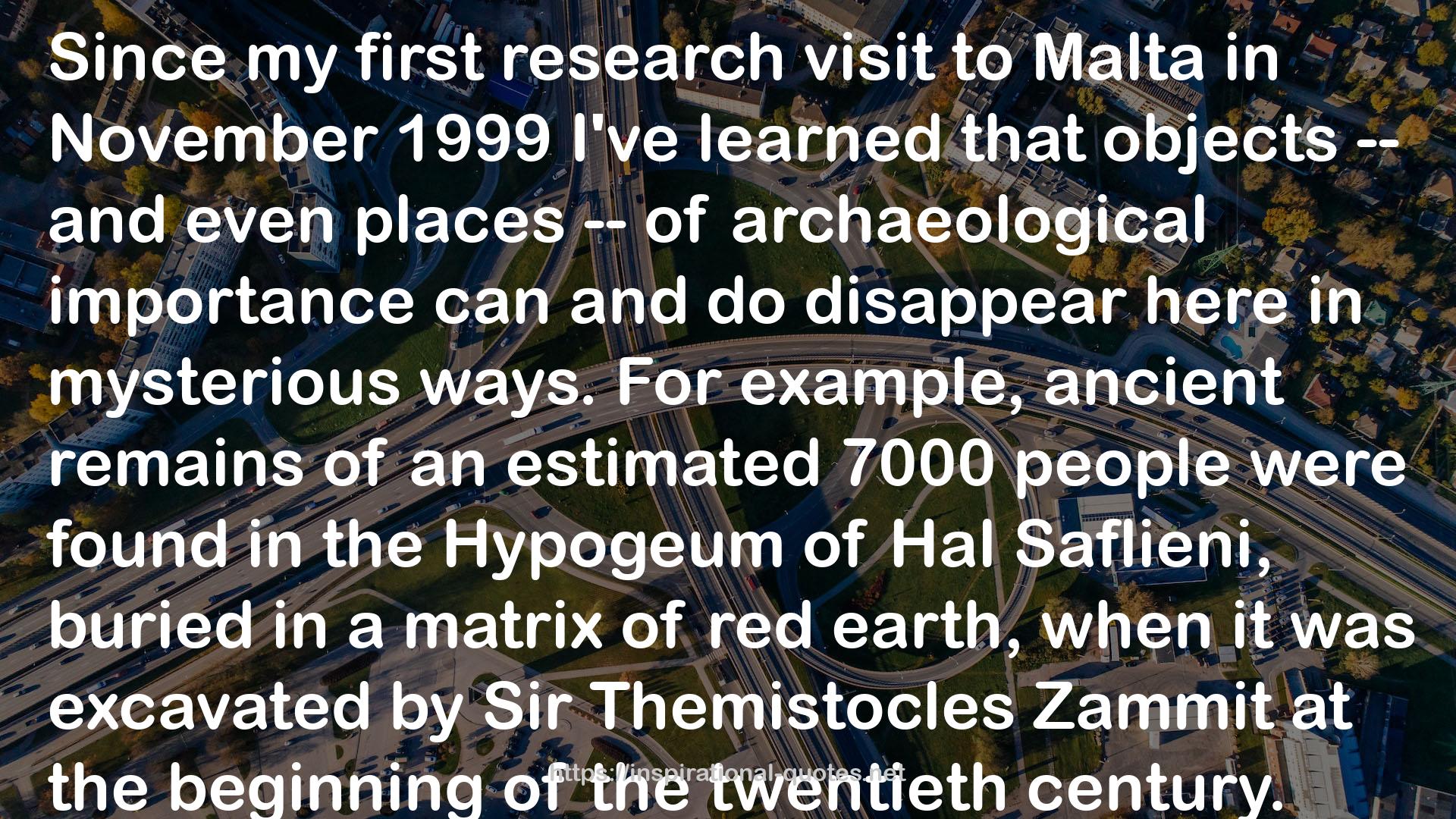" Since my first research visit to Malta in November 1999 I've learned that objects -- and even places -- of archaeological importance can and do disappear here in mysterious ways. For example, ancient remains of an estimated 7000 people were found in the Hypogeum of Hal Saflieni, buried in a matrix of red earth, when it was excavated by Sir Themistocles Zammit at the beginning of the twentieth century. Today only six skulls are left, stashed out of public view in two plastic crates in the cavernous vaults of Malta's National Museum of Archaeology. Nobody has the faintest idea what has happened to all the rest of the bones. They've just 'vanished', according to officials at the Museum.
And the six skulls? After much pressure and protest I have been allowed to see them only this morning and they are -- I must confess -- extremely and unsettlingly odd. They are weirdly elongated -- dolichocephalic is the technical term but this is dolichocephalism of the most extreme form. And one of the skulls, though that of an adult, is entirely lacking in the fossa median -- the clearly-visible 'join' that runs along the top of the head where two plates of bone are separated in infancy (thus facilitating the process of birth) but later join together in adulthood. I should be paying attention to the fantastic views and seascapes unfolding beneath the helicopter but I keep on wondering: what would people with skulls like that have looked like during life? How could they have survived birth and grown to adulthood? And did the other skulls from the Hypogeum -- the lost skulls, the lost bones -- also show the same distinctive peculiarity? "
― Graham Hancock , Underworld: The Mysterious Origins of Civilization
